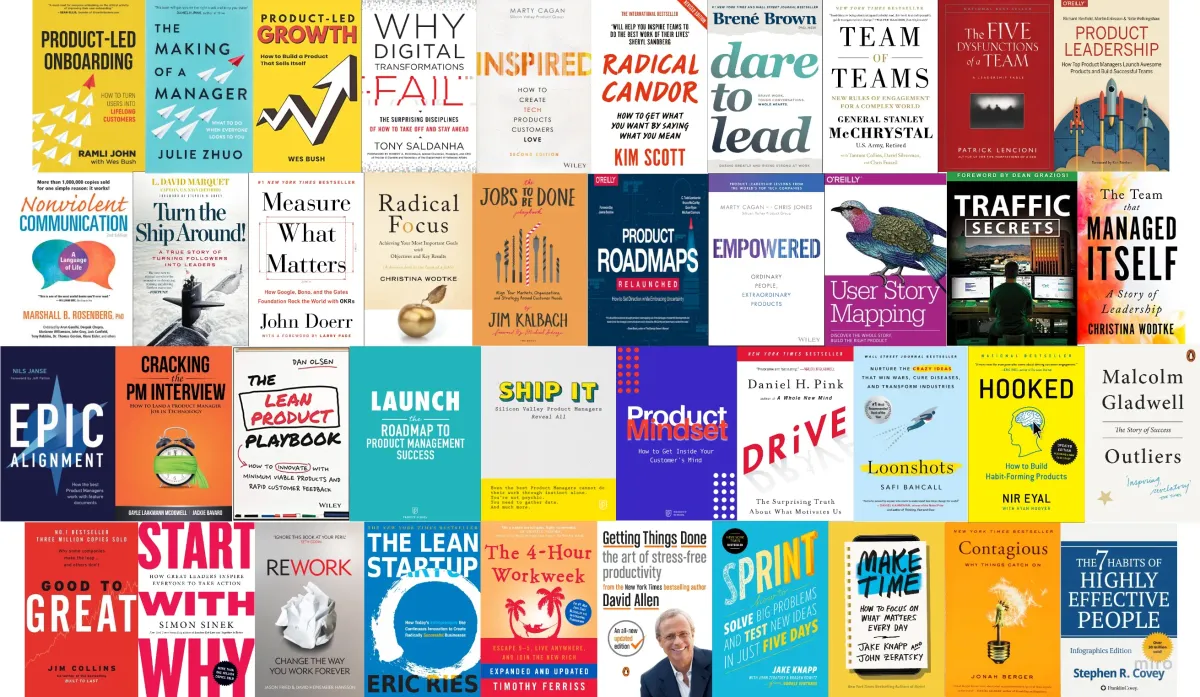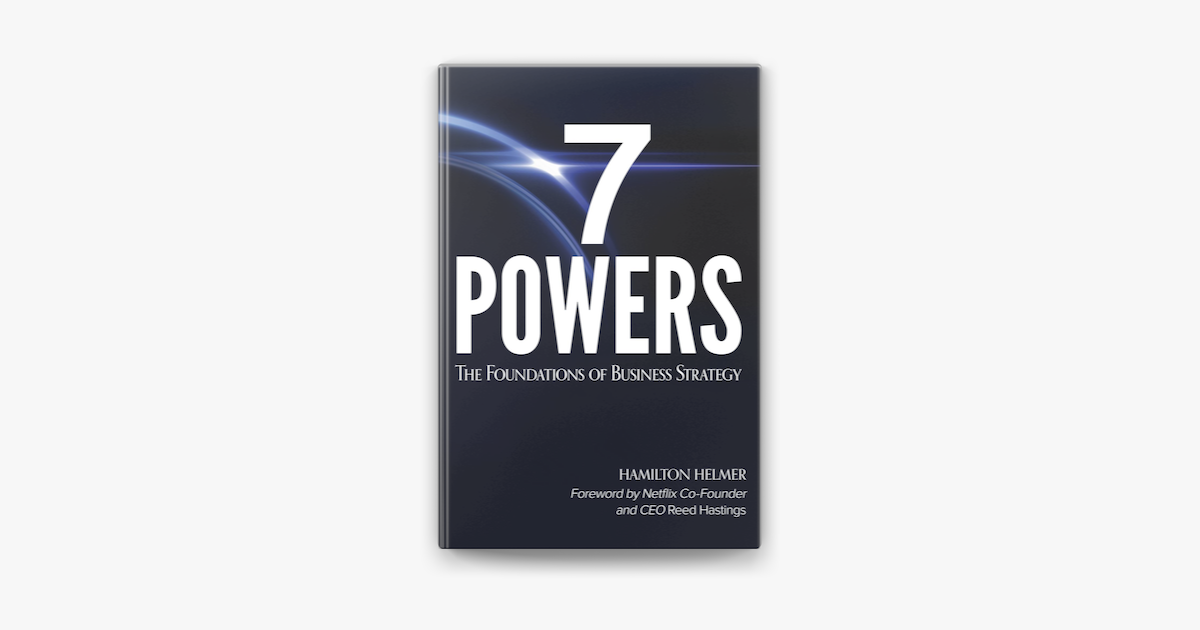Product Strategy Books
Crafting winning product strategies is essential for business success, but with so many books on the subject, where should you start? This article explores 12 illuminating books that provide actionable frameworks, inspiring ideas, and practical lessons to help shape your product roadmap.

In the fiercely competitive world of business, mastering product strategy is akin to commanding an orchestra of complex variables; each element must harmonize with the rest to produce a symphony of sustainable success.
Yet, many product leaders find themselves either trapped in tactical minutiae or adrift in abstract theory. But these books don't stop at theories; they translate strategy into actionable tactics.
Delve into Bill Aulet's meticulous 24-step roadmap for disciplined entrepreneurship and Steve Blank’s pioneering approach to customer development.
Learn to dissect and solve complex challenges through the lens of 'Are Your Lights On?' and hone your mental acuity with 'Super Thinking.'
And all along the way, we'll spotlight how these frameworks have been employed by industry giants and agile startups alike to carve out a piece of the market that is distinctly and unassailably theirs.
While strategy is an amorphous topic, these authors break down the component parts in actionable ways. By taking key lessons to heart, product managers can gain the strategic sensibilities required to separate good ideas from great ones.
Whether launching a new product or improving an existing one, sound strategy acts as the crucial foundation. With so much competition and product clutter today, there is little margin for error.
What You'll Learn
- Strategic Positioning: Synthesizing insights from Porter's foundational theories and Hamilton Helmer's 7 Powers, learn how to establish lasting competitive advantage through smart trade-offs and strategic alignment.
- Execution Frameworks: Delve into the 24-step framework from 'Disciplined Entrepreneurship' and Steve Blank's Customer Development model for rapidly testing and iterating on business ideas, ensuring you're not building castles on sand.
- Decision Making & Critical Thinking: Uncover the cognitive tools discussed in 'Super Thinking' and 'Are Your Lights On?' to analyze, evaluate, and solve problems with a structured approach, making you a more effective strategist.
- Crafting a Compelling Narrative: Understand from 'Obviously Awesome' how effective product positioning can be your secret weapon for capturing customer attention, and from 'Playing to Win' how making deliberate choices can lead to strategic clarity.
Business Strategy
Understanding Michael Porter

Understanding Michael Porter by Joan Magretta provides an accessible overview of Porter's seminal frameworks on competitive strategy. While Porter authored famous books like Competitive Strategy and Competitive Advantage, this book distills his core ideas in a concise, engaging primer. Porter's central concept is that companies gain lasting success by establishing competitive advantages in their industry. This requires making smart trade-offs and choices to perform different activities than rivals or perform similar activities in unique ways.
Porter outlines five key forces that shape competition, three generic strategies firms can follow, and the importance of fit between activities. With clear explanations and examples, this book unpacks Porter's foundational theories on strategic positioning, tailored to a non-specialist audience. For product managers looking to apply rigorous strategic thinking, Understanding Michael Porter delivers an indispensable introduction.
7 Powers

7 Powers by Hamilton Helmer provides a strategic framework for developing competitive advantage based on seven key sources of business power. This book moves beyond classic competitive strategy models like Porter's Five Forces to provide a more holistic view of the diverse capabilities needed to drive lasting success. Helmer outlines seven powers including scale, product innovation, brand, network effects, algorithms, core processes, and company culture.

With case studies and clear examples, 7 Powers gives readers an actionable playbook to audit their existing powers, identify gaps, and develop strengths across all seven areas. While focusing on just one or two powers like innovation may work in the short-term, this book provides a blueprint to build enduring dominance through deliberate capability advantages. For product strategists looking to gain a durable edge over rivals, 7 Powers delivers an indispensable guide.
Good Strategy / Bad Strategy

In Good Strategy Bad Strategy, acclaimed UCLA professor Richard Rumelt dismantles the vagueness and jargon that often pass for strategy. This eye-opening book provides clear criteria for what constitutes good strategy rooted in a diagnosis of the situation, a guiding policy, and coherent action plans.
Rumelt argues that good strategy is specific, action-oriented, and leverage focused rather than a vague wish list or repackaging of generic approaches. He exposes bad strategy tendencies like superficial analogies, contradiction, and fluff as barriers to developing thoughtful advantage over rivals.
With insights drawn from business, politics, and military campaigns, Rumelt offers a new framework for honing strategic thinking and separating good strategy from misguided efforts. For product teams crafting strategy and bringing concepts to market, Good Strategy Bad Strategy delivers an essential primer based on the hard realities of execution and results rather than buzzwords.
Strategic Execution
Disciplined Entrepreneurship

In Disciplined Entrepreneurship, MIT lecturer Bill Aulet provides a systematic guide for launching new products and businesses. Aulet outlines a 24-step framework encompassing ideation, customer discovery, product development, fundraising, and execution planning.
Core to his approach is testing riskiest assumptions early, formulating actionable business models, and focusing on a minimum viable segment to establish a beachhead against competitors.
Disciplined Entrepreneurship advocates balancing flexibility and focus - leveraging agile methodologies while working relentlessly on the few key things that matter most. Aulet draws on real-world examples like Hubspot and Salesforce to illustrate structured entrepreneurship in action.
The book supplies a comprehensive playbook for product managers and innovators seeking to increase their odds of success through greater rigor, customer insight, and strategic clarity.
While comprehensive, the 24 steps boil down to relentless early testing and iteration rather than getting stuck on assumptions or rigid master plans.
Four Steps of the Epiphany

In The Four Steps to the Epiphany, Silicon Valley expert Steve Blank outlines a process for rapidly testing and iterating on business ideas called Customer Development. This approach revolutionized the lean startup movement. Blank's four steps involve identifying potential customers, validating needs, designing the product, and scaling up.
Central to his process is early customer discovery through intensive interviews and hypothesis testing to validate assumptions. Blank argues that startups fail when they leap to execution without thoroughly vetting ideas first. By contrast, Customer Development requires systematic testing and learning before committing major resources.
Although written for startups, the four steps provide invaluable advice for enterprise product teams by emphasizing quick prototypes and customer feedback over isolated planning.
For product builders looking to integrate evidence-based learning into their process, The Four Steps to the Epiphany supplies a proven framework for iteratively developing the right product the right way.
Good to Great & Turning the Flywheel

In his bestselling book Good to Great, Jim Collins analyzed how good companies can achieve greatness through disciplined culture and rigorous strategic focus. By comparing great companies to good ones, Collins found that greatness comes not from radical innovation but from fanatic discipline around a core business concept.
Companies must determine their hedgehog concept - the single thing they can be best at in the world. Then they must channel relentless effort into deepening that competence over many years through a flywheel effect.

In Turning the Flywheel, Collins builds on these concepts using a monumental engineering project as an analogy. He argues that success comes from patience, persistence, and pushing the flywheel step-by-step until momentum kicks in.
For product teams looking to build excellence over time, Collins' books offer enduring lessons on fostering a culture of sheer determination to be the best within a narrowly defined niche. This long-term flywheel approach provides a blueprint for achieving greatness through focus, consistency, and incremental improvement.
Obviously Awesome

In Obviously Awesome, veteran product marketer April Dunford lays out a framework for positioning products in a way that gets buyers’ attention. Drawing on her experience at technology companies like IBM and SAP, Dunford explains how proper positioning galvanizes sales and marketing around a coherent story that resonates with customers. She advises avoiding generic claims that blur into the crowd, instead finding your obvious awesomeness through concrete differentiation.
Dunford provides a step-by-step guide to discovering your product’s uniqueness and nailing your positioning. She advises testing messages experimentally through customer discovery conversations to refine the positioning. With insights into buyer psychology and crisp writing advice, Obviously Awesome delivers a highly tactical playbook for product teams seeking to tell their story powerfully.
The result is a positioning statement that frames the value proposition in a way that instantly grabs potential customers’ interest.
Playing to Win

In Playing to Win, former P&G CEO A.G. Lafley and strategy professor Roger Martin present a strategic approach based on making clear, deliberate choices. They advocate choosing a specific playing field where you can achieve profitable, sustainable advantage.
This requires clarifying where you will and, just as importantly, won’t compete. The authors push for crisp, unambiguous choices guided by an overarching strategy statement. Playing to Win details five key strategic choices on what winning needs to look like, where to play, how to win, core capabilities, and management systems.
With compelling examples like P&G, Apple, Southwest Airlines, and Salesforce.com, the book makes the case that companies thrive by making tough choices rather than being all things to all people.
For product teams looking to stake out a winning position, Playing to Win offers an indispensable guide for saying no to the wrong ideas so you can focus on the right ones. The result is the strategic clarity and alignment needed to make the right bets, drive trade-offs, and win where it matters most.
Decisions
Are Your Lights On?

Are Your Lights On? by Donald Gause and Gerald Weinberg offers a thought-provoking approach to problem solving and critical thinking. This book provides a framework for evaluating problems, asking the right questions, challenging assumptions, and investigating root causes.
The title refers to the idea of turning on the "lights" in your mind to illuminate a problem from all angles. This requires avoiding narrow perspectives and cognitive biases that limit solutions. Are Your Lights On? trains readers to shift from reactive problem solving to proactive systems thinking.
With an engaging storytelling style, the authors walk through real world case studies on debugging systems, managing projects, and designing products. While originally published in 1982, the lessons on structured reasoning, mental models, and inquiry skills remain highly relevant for modern product strategists seeking to frame, analyze, and solve fuzzy problems.
Super Thinking

In Super Thinking, serial entrepreneur Gabriel Weinberg and behavioral scientist Lauren McCann tackle the challenge of clearer, more systematic thinking. This book provides proven frameworks to overcome flawed mental models, cognitive biases, and unstructured decision-making.
Super Thinking presents a step-by-step toolkit including principles like "reasoning from first principles," "avoiding tunnel vision," and "considering the opposite." Through relatable examples and action prompts, the authors guide readers to get beyond intuitive reactions and tackle problems rationally. The super thinking methodology draws lessons from super forecasters who make remarkably accurate predictions.
By avoiding common pitfalls like overconfidence and confirmation bias, anyone can hone their reasoning and critical thinking abilities. For product strategists seeking to make sound decisions, Super Thinking offers an operating manual for upgrading one's mental software. The result is better judgment and choices that pay off in the long run.

